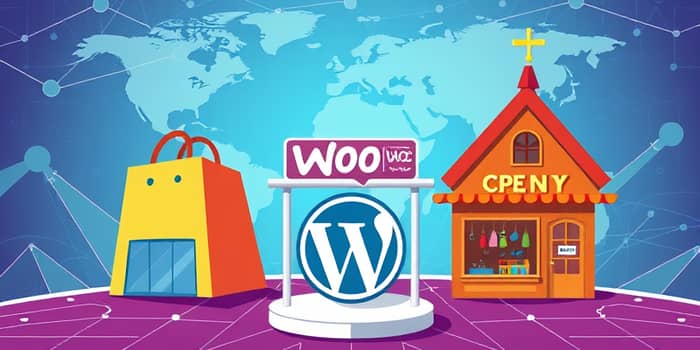Choosing the right e-commerce platform can make or break your online business. In this article, we explore the strengths, weaknesses, and ideal use cases for Shopify, WooCommerce, and Etsy, helping you make an informed decision.
Market Position and Overview
Each platform fulfills distinct needs in the rapidly evolving online marketplace. Shopify dominates with extensive features, WooCommerce empowers WordPress users, and Etsy caters to artisans and vintage sellers.
Understanding their market share and core offerings sets the stage for a detailed analysis.
Core Functionality
When assessing foundational capabilities, these differences stand out:
- All-in-one e-commerce solution with hosted infrastructure and support.
- Self-hosted solution requiring WordPress knowledge and total control over code.
- Niche marketplace for handmade goods with built-in audience.
Shopify offers an intuitive, hosted environment where you can launch a store without separate hosting. WooCommerce is a robust plugin that transforms WordPress sites into full-fledged storefronts. Etsy connects creators to buyers hunting for handcrafted and vintage items.
Ease of Use
For many entrepreneurs, simplicity is key. Etsy’s setup is remarkably straightforward, requiring minimal configuration, making it ideal for beginners. Shopify provides a guided onboarding process, balancing ease-of-use with rich functionality. WooCommerce demands familiarity with WordPress and web hosting, making the initial setup more technical.
Pricing Structure
Understanding costs is essential for profitability. Each platform presents unique fee structures:
While Shopify’s flat-rate monthly plans include hosting and support, WooCommerce’s costs hinge on your hosting provider and paid extensions. Etsy charges minimal listing fees but higher transaction percentages.
Design and Customization
Your brand’s look and feel depends on how much you can tailor your store. Shopify provides a library of themes and a drag-and-drop editor for complete control over your store's design. WooCommerce leverages thousands of WordPress themes and plugins, enabling almost limitless customization. Etsy, however, maintains a consistent template across all shops, offering minimal branding options.
Marketing and SEO Capabilities
Driving traffic relies on effective marketing tools and search optimization. Consider the following:
- Shopify: Built-in blog, email campaigns, and an app store of over 1,500 marketing integrations.
- WooCommerce: Full access to WordPress SEO plugins, customizable metadata, and advanced blogging features.
- Etsy: Platform-specific SEO tags, internal ads, and social media integration, but limited analytics.
Shopify’s ecosystem offers user-friendly marketing suites, while WooCommerce benefits from WordPress’s mature SEO landscape. Etsy sellers rely on platform visibility and offsite advertising credits.
Payment Processing
Seamless transactions build trust and convenience. Shopify Payments streamlines checkout with support for credit cards, digital wallets, and even cryptocurrency. WooCommerce integrates with countless payment gateways but requires external setup. Etsy Payments offers multiple currencies and standardized processing, though customization is restricted.
Inventory Management
Efficient stock control prevents overselling and lost revenue. Shopify’s dashboard provides robust inventory tracking and management across online and physical channels. WooCommerce delivers basic inventory tools, extendable through plugins. Etsy manages listings simply but lacks advanced warehousing or POS features.
International Selling
Global expansion demands currency conversion, tax calculations, and localized experiences. Shopify excels with automatic regional pricing, localized domains, and built-in tax tools. WooCommerce offers full control but requires manual configuration. Etsy listings are visible worldwide, and sellers handle shipping logistics and customs independently.
Customer Support
Responsive assistance can save crucial uptime. Shopify provides 24/7 live chat and expert guidance. WooCommerce relies on community forums, documentation, and third-party developers. Etsy’s Seller Handbook and email support suffice for basic queries but may be slower during peak periods.
- Shopify: 24/7 live chat, email, and phone support
- WooCommerce: Community forums and documentation
- Etsy: Help Center articles and email response
Scalability and Target Audience
Growth potential determines your long-term choice. Shopify scales effortlessly with enterprise-grade plans and a vast app ecosystem. WooCommerce scales with server upgrades and optimization but needs technical oversight. Etsy’s model suits small to mid-size creative shops but offers limited scaling beyond its marketplace.
- Established brands seeking enterprise solutions
- WordPress users desiring full flexibility
- Artisans targeting craft and vintage shoppers
Current Trends and Future Outlook
As of 2025, Shopify remains the top-ranked e-commerce platform, continuously enhancing its feature set. WooCommerce thrives among WordPress communities, especially those prioritizing open-source control. Etsy evolves with new seller tools and offsite marketing options, reinforcing its niche dominance.
Conclusion
Selecting the right platform depends on your business model, technical resources, and growth ambitions. Shopify offers a seamless, all-encompassing storefront solution ideal for rapid scaling. WooCommerce grants unparalleled customization power for WordPress users. Etsy provides a ready-made audience for creative entrepreneurs without upfront hosting or design complexities.
By weighing ease of use, cost structures, customization potential, and support options, you can align your e-commerce strategy with the platform that best supports your vision.
References
- https://www.shopify.com/compare/etsy-vs-woocommerce-vs-shopify
- https://www.websitebuilderexpert.com/ecommerce-website-builders/comparisons/woocommerce-vs-shopify/
- https://zapier.com/blog/shopify-vs-etsy/
- https://www.shopify.com/it/compare/etsy-vs-woocommerce-vs-shopify
- https://printify.com/blog/shopify-vs-etsy/
- https://www.6sense.com/tech/ecommerce-platform/shopify-vs-etsy
- https://litcommerce.com/blog/woocommerce-vs-etsy/
- https://www.podbase.com/blogs/shopify-vs-etsy










